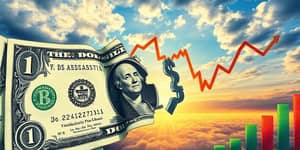
When central banks embark on aggressive rate hikes, the bond market responds in subtle yet profound ways. Among the most telling signals is the flattening of the yield curve, a phenomenon that often predicts shifts in economic momentum and investor sentiment.
In this article, we explore why yield curves flatten during tightening cycles, what historical data reveals, and how market participants can adapt to these changes.
The yield curve is a graphical representation of interest rates on bonds of equal credit quality across different maturities. Typically, government securities serve as the benchmark, providing a clear reflection of market expectations.
Each shape conveys a distinct economic narrative. An upward slope signals growth and rising inflation expectations. An inverted curve often foreshadows recession. A flat curve, positioned between these extremes, suggests a period of transition or uncertainty.
Central banks use tightening cycles—successive policy rate hikes—to temper inflation or cool an overheating economy. These actions have immediate effects on short-term yields, but what drives the long end of the curve?
The combination of sharply rising short-term rates and relatively static or falling long-term rates narrows the yield spread. Investors witnessing this shift often interpret it as a sign that tightening will ultimately slow economic activity.
The 2022–2023 U.S. Federal Reserve tightening cycle offers a vivid illustration. When the Fed lifted its policy rate from near zero to over 5%, the 2-year Treasury yield skyrocketed from below 1% to around 5%. In contrast, 30-year yields moved more modestly, climbing to approximately 5.1%.
Historical spreads between the 2-year and 30-year yields can exceed 250 basis points in normal times yet shrink to 10 basis points or even invert during periods of tightening and heightened uncertainty.
A flattening yield curve carries wide-ranging consequences across the financial system. Banks, for instance, rely on the difference between borrowing short and lending long to generate profits. When the curve flattens, this spread narrows, reducing banks’ incentive to extend credit.
Moreover, a flat curve can dampen economic activity. With banks more cautious and borrowing costs elevated across the maturity spectrum, businesses and consumers may defer investment and spending decisions.
While a fully inverted curve is a well-known recession predictor, flattening often serves as an early warning. It signals that markets expect
slower growth ahead, even if recession is not yet imminent.
Investors and policymakers monitor key spreads—such as the 2s10s and 2s30s—for signs that monetary policy is beginning to bite. A sustained flattening can prompt portfolio rebalancing toward shorter durations or alternative assets.
Financial professionals and individual investors can adopt several approaches to mitigate risks and seize opportunities presented by a flat yield curve.
Key considerations include:
By closely monitoring market signals and adjusting positions in real time, investors can better position themselves for potential volatility and shifting return profiles.
The flattening of the yield curve during tightening cycles encapsulates a complex interplay between central bank actions, investor expectations, and economic fundamentals. It is not merely a statistical curiosity, but a powerful signal of changing market dynamics.
Understanding the mechanics and ramifications of a flat yield curve equips investors, bankers, and policymakers with insightful early warnings about the health of the economy. As central banks continue to navigate inflationary pressures, the behavior of the yield curve will remain a vital barometer of financial and economic conditions.
In a world where interest rates reflect the pulse of global markets, mastering the story behind the curves can illuminate the path forward.
References













